Current form and functions of public education have existed since 1926, yet it was not designed or intended to fully support learning and well-being for ALL students. Issues around segregation of racial, handicapped, and underprivileged students pushed reform agendas to ensure ALL was added to the functions and expectations of public schools. The Individuals With Disabilities Education Act (IDEA) sites details of the history of this act. Linda Darling-Hammond outlines the history of inequality in education HERE
The institution called “school” evolved from ensuring basic skills for democracy (an efficiency model) to a full-service social entitlement (an adaptable model).
Today, very few things are constantly in the public eye more than public education. From financial concerns (education accounts for over 50% of property tax revenues), to quality concerns (from state, national, and international testing data), to safety concerns (school shootings, student violence and behavior), and to political concerns (CRT, book banning, sexual orientation and gender identity), schools face constant scrutiny and must adapt. Our educational system is now at a peak of being one of the most complex systems to manage; yet universal expectations for scale and efficiency in outcomes still exist.
Science would suggest that “most complex systems will inevitably fall short, with unpredictability being the best prediction”. (1) This science advocates that complex systems should be multiscaled in nature, designed to be flexible with multiple processes occurring simultaneously. However, current educational systems are required to respond to this ever growing complexity and do so under the watchful eye of state and federal accountability and emotionally charged citizens. The approach of addressing academic quality through standardization makes the assumption that our system should be creating “standard units” that will leave the education system all exactly the same. This does not mirror what our communities, families, and employers are voicing: the need for diversity and inclusion in education for ALL students. That schools should not be producing “widgets” but rather fostering creativity, problem-solving, and critical thinking as major attributes of success. That school structures should not be based primarily around childcare needs. That schools should be held responsible for, in fact, the full spectrum of Maslow’s Hierarchy of Needs (Maslow’s Hierarchy ofNeeds | Education, Society, & the K-12 Learner) in addition to academic outcomes.
Our schools are in distress!!!
This mismatch between design and expected outcomes is pushing our systems to the brink. While attempts to make each child successful in school have occurred, they generally focus on the expectation that every child needs the same educational structure and outcomes in order to be successful in life and work. While that may have sufficed when the majority of children worked in factories or other types of compliance-based jobs, things are quite different in 2022. School design, community environmental factors and expected outcomes are critical considerations in what and how we should think about educational reform.
While tools, technology, desk styles, etc., look different, there is remarkably little difference in form and function of the classroom. This “tinkering” with the system to better mitigate the issues and “gaps” in learning for many students has resulted in billions of dollars poured into our schools. Society has even created different models for schooling: charter, private, community, alternative, etc. These efforts have resulted in great strides for subsets of the issues in our schooling system (increasing math scores, higher graduation rates, fewer students “left behind”).
This highlights one of the “problems in thinking about complex systems is that we often assign properties to a system that are actually properties of a relationship between the system and its environment.” (Bar-Yam, Y.)
We should give well-deserved credit to a number of improvements that have been made to schooling design (content to be taught desegregation, special education, English language learners) and outcome measures over the last few decades. (Why did U.S. schools make so much progress in the 1990s and early 2000s?) Progress has certainly been made. But the overall form, function and purpose of education still mirrors that of the 1920’s.

[image 1]

[image 2]
The pandemic has added even more layers of societal need into our classrooms and schools. Educators are now required to manage health and welfare issues on top of the ever growing need for safety and social emotional needs. How much complexity can any one school, one teacher really handle? This level of complexity is driving teachers away from the profession in droves, as detailed in this CNN report. The unrealistic demands placed on schools is also creating a lack of trust within communities and the nation that our school system can meet academic accountability standards. The reality is our schools were never designed for the vast number of outcomes and expectations dumped on our educators and schools in 2022.
This blog series will introduce the layers of complexity and lay out underlying issues why education is so difficult to change. We invite you to explore each concept with an open mind and consider why simple solutions have not moved the needle. We encourage you to dialogue with others on this topic and seek various perspectives. At least one aspect of public education touches every person in this country, making every one of us a stakeholder in its outcomes. Every stakeholder has a belief in what those outcomes should be, and those beliefs are vastly different. Because stakeholders (via property taxes) fund public education, they believe that their voices must be heard in the design and purpose of public schools.
By the end, we hope to spark the right types of conversations so citizens can ….
- be more informed about the educational system and its complexities.
- better advocate for effective funding approaches related to education.
- change agendas facing schools to better match the level of complexity they are facing.

